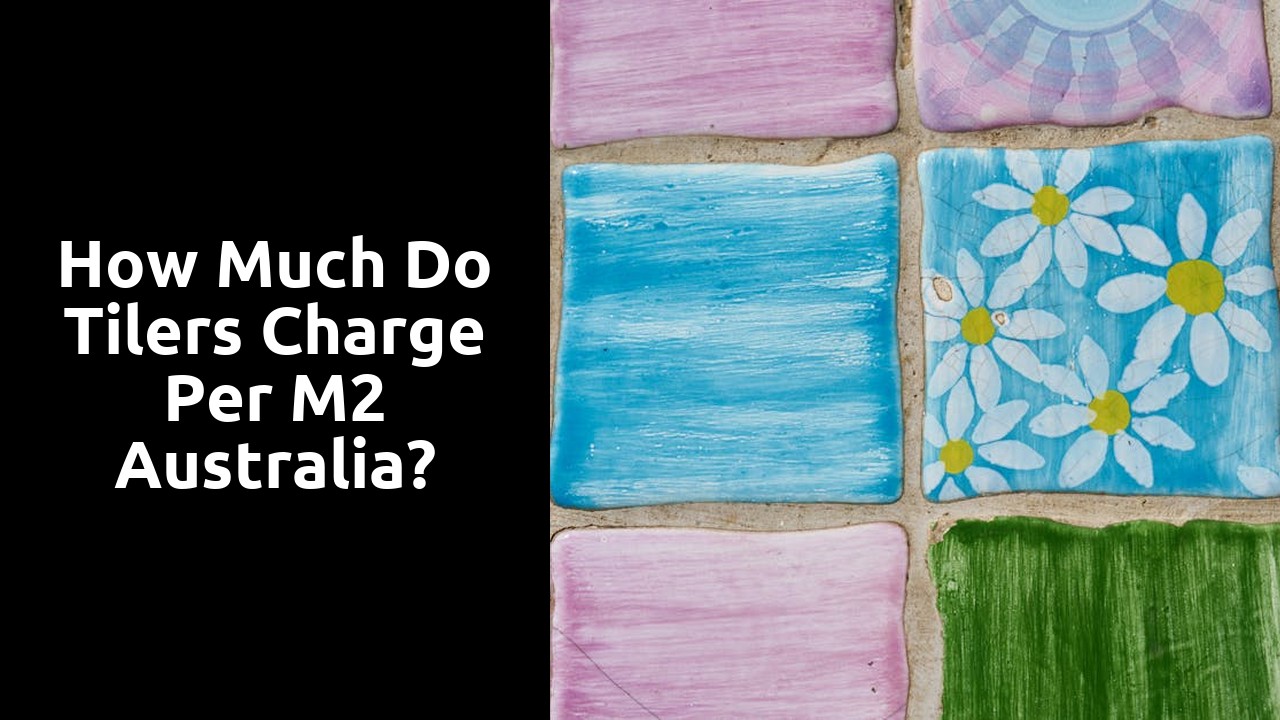How much do tilers charge per m2 Australia?

Additional Services and Extras
When hiring tilers in Australia, it's essential to consider the additional services and extras that may come into play. Beyond the basic tiling work for both floor and wall tiles, some tilers offer services such as waterproofing and sealing. This is particularly important for areas prone to moisture, such as bathrooms and kitchens, as it helps to protect the integrity of the tiles and ensures longevity of the installation. Additionally, some tilers may include the cost of grout and adhesive as part of their quote, while others may charge extra for these materials. It's advisable to clarify these details upfront to avoid any unexpected costs down the line.
Waterproofing and Sealing
To ensure longevity and maintain the quality of floor and wall tiles in Australia, waterproofing and sealing are vital steps in the tiling process. Proper waterproofing helps prevent moisture seepage, which can lead to costly damages and mold growth. Sealing the tiles after installation provides an additional layer of protection, making maintenance easier and protecting the tiles from stains and discolouration caused by spills or water exposure.
Professional tilers in Australia understand the significance of waterproofing and sealing when working with floor and wall tiles. They utilize high-quality products and follow industry best practices to deliver a durable and visually appealing finish. By incorporating waterproofing and sealing into their services, tilers help homeowners and businesses safeguard their investment and ensure the long-term beauty of their tiled surfaces.
Seasonal Price Variations
In Australia, the pricing for tiling services can vary depending on the time of year. During peak periods such as spring and summer, when the demand for tiling services is high, tilers may charge higher rates per square meter. This is because many homeowners choose these seasons for renovation and construction projects. On the other hand, during off-peak periods like autumn and winter, when the demand is lower, tilers might offer discounts or lower their prices to attract more customers. It's essential for homeowners to consider these seasonal fluctuations when planning their tiling project to ensure they get the best possible rates for their floor and wall tiles.
Peak vs. OffPeak Periods
Peak vs. Off-Peak Periods
When it comes to hiring a tiler for your floor and wall tiles, understanding the difference between peak and off-peak periods is crucial. During peak seasons, such as spring and summer, tilers in Australia tend to be in high demand as many homeowners start their renovation projects. Consequently, the prices charged per m2 may be higher during these busier periods due to the increased workload and limited availability of tilers.
On the other hand, off-peak periods, like autumn and winter, could be more cost-effective for tiling projects as there is typically less competition for tilers' services. During these quieter times, tilers may offer discounts or special promotions to attract more clients and keep their business running steadily. Therefore, choosing to schedule your tiling project during an off-peak period could potentially save you money while still receiving high-quality work on your floor and wall tiles.
Tiling Area Measurement
When calculating the cost of tiling services in Australia, accurately measuring the tiling area is crucial. The square meterage of the area to be covered with floor and wall tiles directly impacts the overall cost. To determine the accurate measurement, it is essential to calculate the length and width of the space correctly.
Moreover, irregular shapes or areas with intricate details may require a more meticulous approach to measurement. These irregularities can affect the number of tiles needed and, consequently, impact the pricing. Therefore, it is advisable to consult with a professional tiler to ensure precise measurements are taken into account for an accurate quote.
Accuracy and Precision
When it comes to laying Floor and Wall Tiles, accuracy and precision are critical aspects to consider. A skilled tiler must ensure that each tile is meticulously placed to create a seamless finish. Proper measurements and alignment are crucial to avoid any misalignment or uneven surfaces.
Failure to achieve precise accuracy can result in a subpar look that can greatly affect the overall aesthetics of the tiled area. In addition, inaccuracies in the tiling process may lead to higher costs in the long run due to potential repairs or re-installation. Therefore, hiring a professional tiler with a keen eye for detail and a commitment to precision is essential for achieving a high-quality finish when working with Floor and Wall Tiles.
FAQS
What factors can affect the cost of tiling per m2 in Australia?
The cost of tiling per m2 in Australia can be influenced by various factors such as the type of tiles used, complexity of the job, location, and the experience of the tiler.
Are there any additional services that tilers in Australia may offer?
Yes, in addition to tiling, some tilers in Australia may offer services like waterproofing, sealing, grouting, and tile removal for an extra cost.
How do seasonal price variations impact the cost of tiling per m2 in Australia?
Seasonal price variations can affect the cost of tiling per m2 in Australia, with peak periods often seeing higher prices due to increased demand, while off-peak periods may offer lower rates.
How is tiling area measurement calculated by tilers in Australia?
Tilers in Australia calculate tiling area measurement by multiplying the length and width of the area to be tiled, taking into account any irregularities or obstacles that may affect the tiling process.
Why is accuracy and precision important when it comes to tiling per m2 in Australia?
Accuracy and precision are crucial in tiling per m2 in Australia to ensure that the right amount of materials are used, the tiles are laid correctly, and the final result meets the client's expectations.